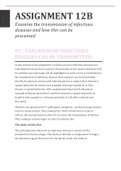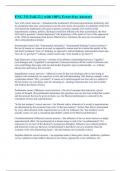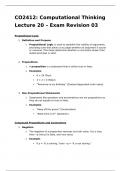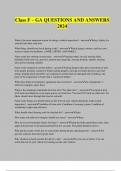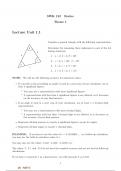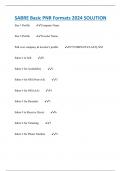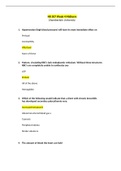Examine the transmission of infectious
diseases and how this can be
prevented
P3 - EXPLAIN HOW INFECTIOUS
DISEASES CAN BE TRANSMITTED.
In this section of the assignment I will discuss how infectious diseases are
transmitted from person to person, the principle of the chain of infection will
be outlined and each stage will be highlighted as well as how it contributes to
the transmission of infectious disease. How diseases can be transmitted
directly by physical contact with infected person or animal, How disease is
spread indirectly by vectors and example of disease spread by it, How
disease is spread indirectly with contaminated food and drink and an
example of disease spread by it and How disease is spread indirectly by
droplets And example of a disease spread by it will all be outlined and
discussed.
Diseases are spread via the 5 pathogenic categories ; protozoa, fungi, viruses,
bacteria and parasites. They undergo the chain of infection in order to
achieve the overall outcome which it too cause the transmission of disease.
They undergo various stages in order to achieve this.
The chain of infection
This principle describes how an infectious disease is spread via the
procedure of various stages. The chain of infection is composed of 6 stages ;
the infectious agent, the reservoir, the portal of exit, the mode of
, transmission, the portal of entry and the susceptible host. Each stage
contributes to the occurrence of transmission. The first of the 6 stages known
as the infectious agent is the pathogen which has the ability to cause/initiate
the infectious disease. The pathogen can either stem from one of the 5
pathogenic groups eg bacteria. Abilities of the infectious agent include having
the capability to cause illness and the symptoms that arise with it. The
second component is referred so as the reservoir. The reservoir is the actual
habitat of the pathogen involved where it undergoes growth and the place it
considers its habitat in order to undergo growth. Examples of reservoir
include inside the actual host, the environment, food and water. Contact with
the reservoir of the pathogen can cause the initiation of the disease
transmission and pathway. The third of the 6 components is known as the
portal of exit. The portal of exit is the exit in which the pathogen leaves the
host in order to cause the spread of the infection. Such exits in the host
include the nose via sneezing and the mouth via coughing. Coughing directly
onto another host will allow the spread of the pathogen upon the targeted
host. Mode of transmission is the fourth category within the chain of
infection. At this point the pathogen has now left the host via the portal of
exit and in the duration of this stage the pathogen now transmits itself to
other hosts through different modes of transmission. Such modes comprise
of contact with other peoples hands, contact with surfaces where the
pathogen is now present upon leaving the portal of exit as well as through
the air by droplets of cough and sneezing. All of these modes of transmission
allow the infection to be successfully transmitted onto another host.
The last two categories are the portal of entry way in and the susceptible
host. The portal of entry way in is which entrance within the host the
pathogen selects in order to enter the host and cause the infection pathway.
Examples of portal of entries include the mouth, eyes, and any wounds that
are open and haven’t been stitched or given the proper care. Lastly the
susceptible host is the individual who will be badly affected by the symptoms
the infection brings to them due to a weaker immune system. Such
individuals include the elderly and children with immune disabilities.
2

